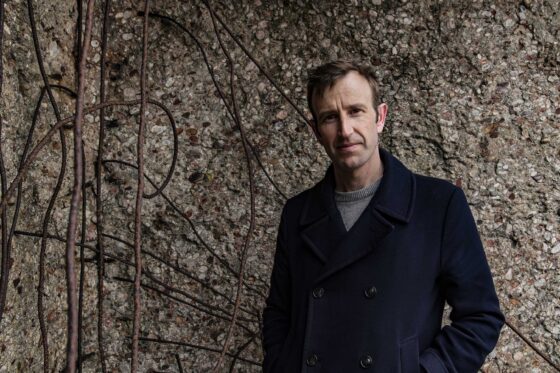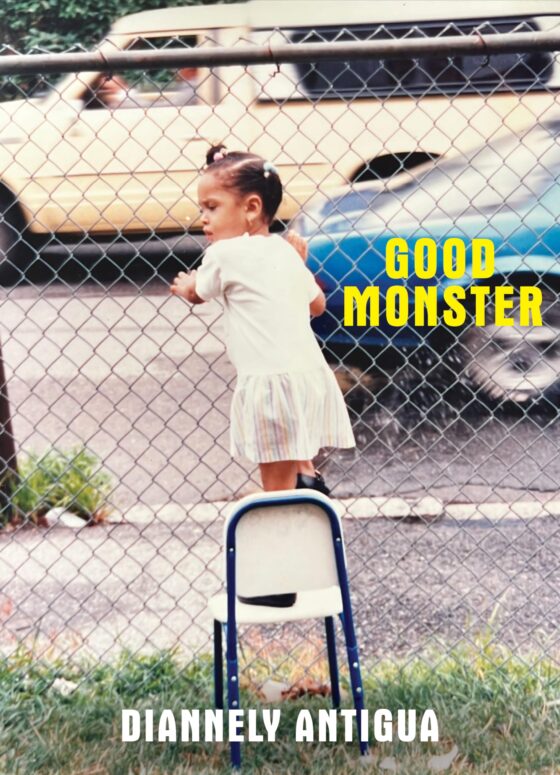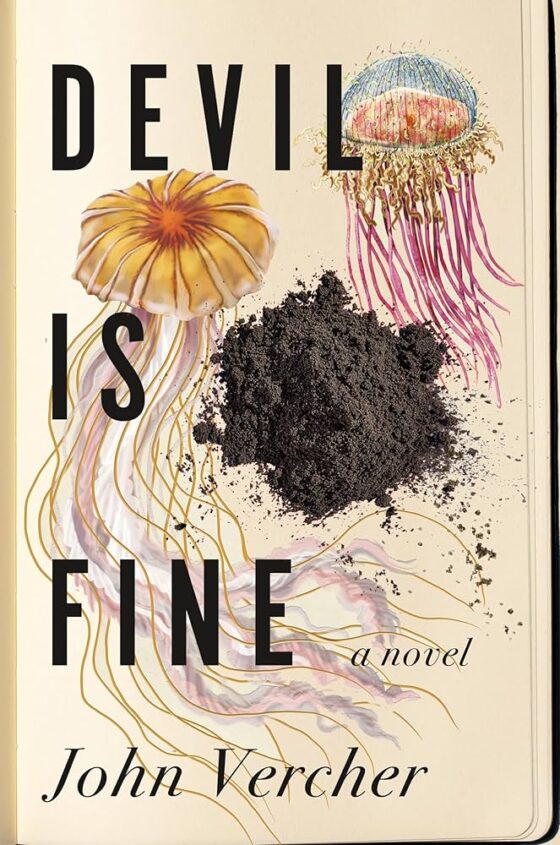In Vanishing-Line, Jeffrey Yang writes, “But the birches of Yennecott/ recall his word-spirits.” Rather than using lines or stanzas as the basic unit of expression in this collection, Yang writes with something more fluid, more abstract, at a different level of reading. These “word-spirits,” delineated by tildes, congeal into an amorphous work; a floating world of art and poetry. Many readers will enjoy floating along, reveling in the unique ability of poetry to generate experiences and emotions beyond the logic of language. But I look for something solid to start from, a center of gravity that helps me organize my own thoughts and reactions, even if I eventually to decide to drift.
In “Harma Hissarlik,” Yang writes, “each form/ following its intention,/ each carving/ a hidden glory.” From that image I saw the work as a sculpture garden. You can wander through the “word-spirits,” focusing on what catches your eye, skimming over what doesn’t, enjoying the accumulated atmosphere of artistic experience and expression. In “Lyric Suite,” Yang writes, “…I walked with her/ thru the lattice streets of the island/ feeling lost but safe/ …streets where people/ read and cooked, played/ chess, elders watched children,/ commerce spilled into/ conversation, her neighborhood at the city’s/ brink.” From this, I imagined being lead around a village by an elder who shared the old names and old words, telling the histories and stories that defined the village.
Ultimately, Vanishing-Line is more focused and more coherent than a sculpture garden or a village tour. In “Elegy for Ling,” he shows us, “old men sorting thru rubble, brick by brick/ rebuilding the ancient walls/ while the ring roads expand/ while machinery explodes/ the celebrity architects multiply/ ignorant of the original design.” Vanishing-Line is a work of archeology. Yang examines places, people, and cultures in time, exploring their context, their causes and effects, their implications and consequences. He displays ancient words like Clovis points; “Izdubar,” “Zagros,” “(Manittuwond then Plum/ stone, Pluym or Pruym plume Patmos)” “qayaq.” He discovers quotes like potsherds, finding value and context in lines by great poets, historical records, and direct descriptions like those of the explorer Gertrude Bell. Finally, language itself is like a geological record. A culture describes itself through the words it uses and the words it doesn’t; “Lying and deceit are unknown among them because they cannot say it.”
This act of archeology culminates in “Yennecott,” a sprawling, ambitious, brilliant exploration of the discovery, colonizing and exploitation of North America by Europeans. Yang is trying to preserve not just the events of history, but the process of those events, discovering the emotions and ideas of today in the words and stones of the past; “From the ancient base of Piraeus passage/ wharves crowded with trade, sea wine-dark// West to the ‘final stop’ of Olson’s Pacific, Ahab/ ‘END of individual responsible only to himself’// Up to the moonlandings, rockets opening prospective,/ space, secret silo sites below, disgrace, Guantánamo, Bajram.”
But we already have archeology. We have museums and history books. Why apply poetry to a problem which appears solved. In “Yennecott,” Yang writes, “Bierstadt’s stereoscopic expedition/…His Rocky Mountain Lander’s Peak/ the ‘consumable landscape,’/ …Shoshone ideal, 1864/ staged tableau painting, among one/ hundred artifacts…/…today, in the museum gallery,/ mountain grass lake bathed/ in saintly sunset, figures/ of romance concealing/ a history of devastation.” (p111) For all its aspirations of fact, history is a form of storytelling, once used to romanticize as often (or perhaps more often) as it is used to reveal. Poetry has always been one of our primary romanticizers, making it uniquely able to strip conquering historians of their romantic veneer.
Yang’s poetics of archeology continue in the “Bibliographic Note and Acknowledgments,” which is more a manifesto than the usual boilerplate citation of sources and thanking of family. Yang argues for poetry as a technique and expression of history; a compartmentalizing of human events, as all works of history are, that does not sever the inherent connections of event to event, culture to culture, person to person. Though Yang doesn’t go so far as to argue traditional history is inherently inaccurate, Vanishing-Line is an attempt to fill in what is excluded by the rigors of fact and the structures of prose. In history as we understand it, “There was a before and after/ the during consumed.” All past was once “now” and poetry speaks to “now.” To Yang, poetry is capable of communicating the consumed during. It is a “library tablet found underground,” whose immediacy is not buried by the passage of time.
Different readers will have different experiences with Vanishing-Line. It can be devoured in one sitting. It can be picked at over time. Many will enjoy it as a sculpture garden or a village tour. Others will enjoy an even more transient interaction with it, drifting from “word-spirit” to “word-spirit,” content to soak up the artful arrangement of words on the page. But because so much of our poetry today seems to be focused on those isolated moments of emotion, I would urge readers to work with the harder more sustained themes in  -Line. Yang is making a statement, something solid that can describe the world, and perhaps even change how we understand and interact with it. Though many readers and poets prefer to drift, to Yang, a poem is to dig.
-Line. Yang is making a statement, something solid that can describe the world, and perhaps even change how we understand and interact with it. Though many readers and poets prefer to drift, to Yang, a poem is to dig.




